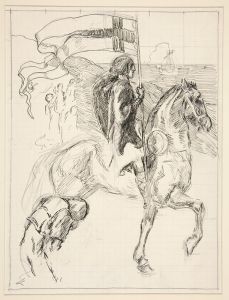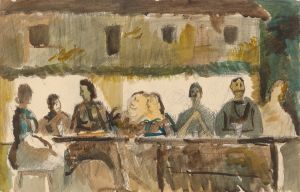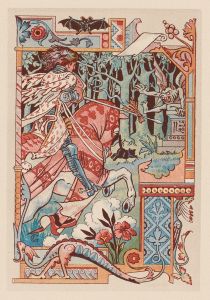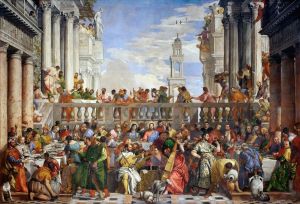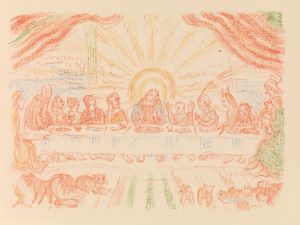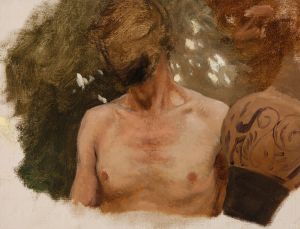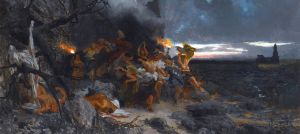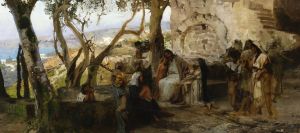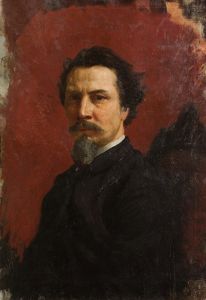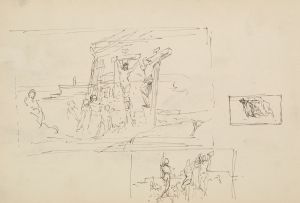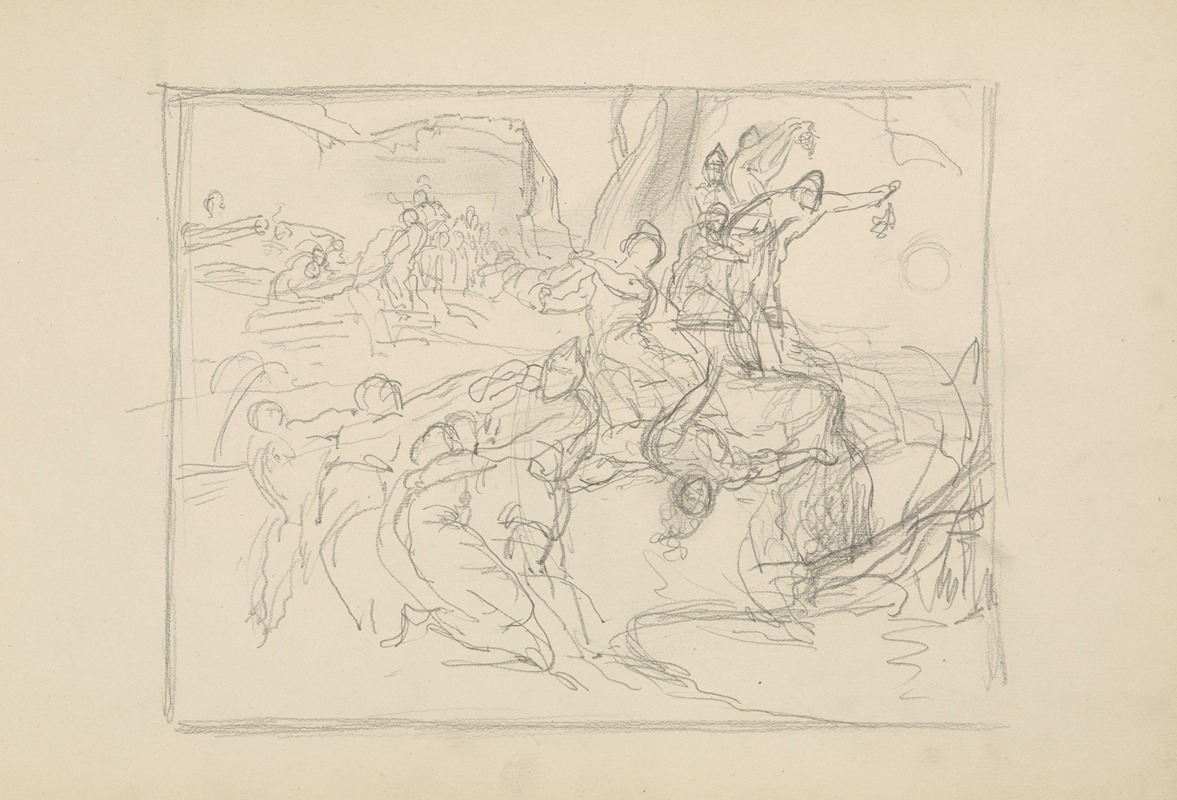
szkic do obrazu ‘Stypa wojowników Światosława po bitwie pod Dorostołem w r. 781’ z roku 1884
A hand-painted replica of Henryk Siemiradzki’s masterpiece szkic do obrazu ‘Stypa wojowników Światosława po bitwie pod Dorostołem w r. 781’ z roku 1884, meticulously crafted by professional artists to capture the true essence of the original. Each piece is created with museum-quality canvas and rare mineral pigments, carefully painted by experienced artists with delicate brushstrokes and rich, layered colors to perfectly recreate the texture of the original artwork. Unlike machine-printed reproductions, this hand-painted version brings the painting to life, infused with the artist’s emotions and skill in every stroke. Whether for personal collection or home decoration, it instantly elevates the artistic atmosphere of any space.
Henryk Siemiradzki's painting, "Szkic do obrazu ‘Stypa wojowników Światosława po bitwie pod Dorostołem w r. 971’" (Sketch for the painting ‘The Wake of Sviatoslav's Warriors after the Battle of Dorostolon in 971’), created in 1884, is a significant work that reflects both the artist's skill and a historical event from the medieval period. Siemiradzki, a Polish painter known for his academic style and historical subjects, often drew inspiration from classical antiquity and Slavic history.
The painting depicts a scene following the Battle of Dorostolon, which took place in 971. This battle was a significant conflict between the forces of Kievan Rus', led by Prince Sviatoslav I, and the Byzantine Empire. The battle occurred near Dorostolon, present-day Silistra in Bulgaria, and was part of Sviatoslav's campaign in the Balkans. The conflict ended with a Byzantine victory, forcing Sviatoslav to retreat and eventually negotiate peace with the Byzantine Emperor John I Tzimiskes.
Siemiradzki's work captures the somber aftermath of the battle, focusing on the warriors of Sviatoslav. The term "stypa" refers to a wake or a funeral feast, indicating that the painting portrays a moment of mourning and reflection among the warriors for their fallen comrades. This theme of commemoration and the honoring of the dead is a poignant aspect of the painting, highlighting the human cost of war and the cultural practices surrounding death and remembrance in Slavic traditions.
The artist's attention to detail and his ability to convey emotion through composition and color are evident in this work. Siemiradzki was known for his meticulous approach to historical accuracy, often conducting extensive research to ensure the authenticity of his settings and costumes. This dedication to realism is reflected in the painting's depiction of the warriors' attire and the somber, reflective mood of the scene.
Siemiradzki's choice to focus on this particular historical event may have been influenced by the broader cultural and nationalistic movements of the 19th century, which saw a resurgence of interest in Slavic history and identity. By portraying a moment from the past that resonated with contemporary themes of heroism, sacrifice, and cultural heritage, Siemiradzki contributed to the ongoing dialogue about national identity and historical memory.
The painting is an example of Siemiradzki's broader oeuvre, which often explored themes of history, mythology, and the human condition. His works were well-received in his time, earning him recognition and accolades across Europe. Today, Siemiradzki is remembered as one of the prominent figures in Polish art, and his paintings continue to be studied and appreciated for their artistic and historical significance.
In summary, "Szkic do obrazu ‘Stypa wojowników Światosława po bitwie pod Dorostołem w r. 971’" is a testament to Siemiradzki's skill as a painter and his interest in historical subjects. Through this work, he captures a moment of reflection and mourning, offering viewers a glimpse into the past and the enduring themes of loss and remembrance.





